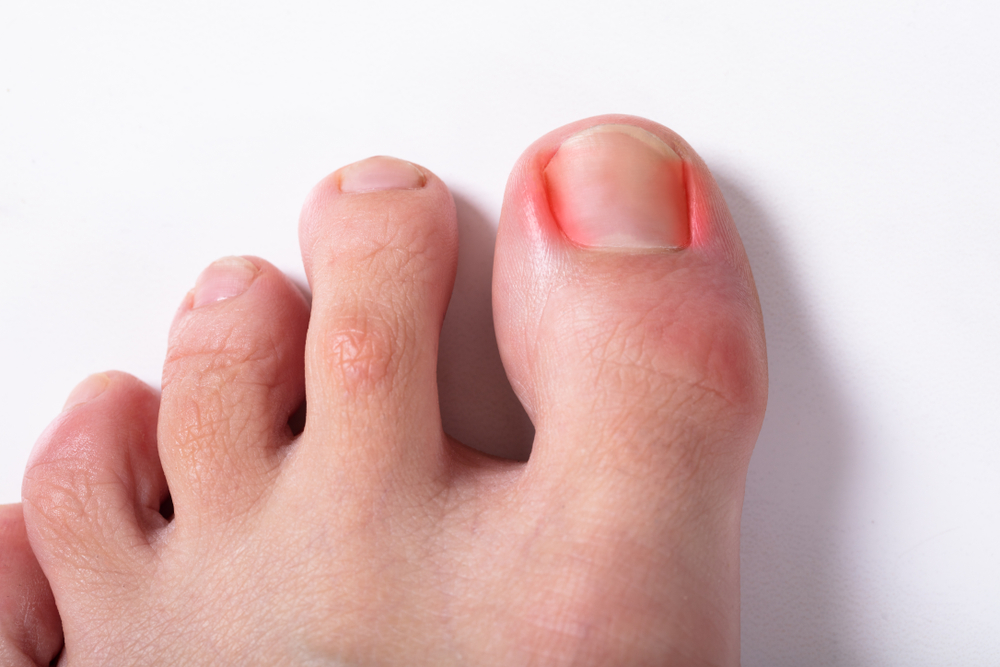Ingrown toenails are unfortunately very common. They are described as foot conditions where the corner of the toenail grows into the skin, typically the big toenail. However, they can happen to any nail (Cleveland Clinic, 2020). Many of us have experienced them, as they can occur after a stubbed toe, badly trimmed nail, or ill fitting shoes, among others. They can become tender and make walking or wearing shoes uncomfortable. But in serious cases they can lead to infections and even require surgery. Though they are common and frequently can go away on their own, it is important to understand ingrown toenails in order to properly care for them and know when seeing a doctor is necessary.
The initial signs of an ingrown toenail include pain, inflammation, hardening of the skin, and swelling. If the ingrown toenail becomes infected, there may be signs of pus or liquid draining from the area (American Academy of Orthopaedic Surgeons, 2021). Certain factors increase the risk of them occurring, including participating in activities that can injure the toes like running, trimming the nails too short, wearing constrictive shoes, or having diabetes or other conditions that can cause poor blood flow. They are also more common in adolescents as their feet tend to sweat more (Mayo Clinic, 2022). Things such as trimming toenails straight across or wearing proper footwear can minimize the risk. For those with diabetes, checking your feet regularly for any changes or problems is necessary in order to avoid further issues.
Though ingrown toenails frequently go away on their own, if they persist after a few days or you believe there may be an infection present, consulting a physician is important. The doctor can then recommend a specific treatment based on the severity of the ingrown toenail. Examples of treatments include lifting the nail to allow it to grow properly, taping the nail with tape that pulls the skin back and allows the nail to grow, and in more serious cases doctors may surgically remove a portion of the nail or all of the nail (Mayo Clinic, 2022).
Due to the different levels of severity and possible risks involved, keeping a close eye on ingrown toenails is critical. If you have an ingrown toenail that won’t go away after a few days, looks infected, or keeps occurring, contact our offices today. Our doctors are here to determine the best possible treatment option and provide you with the quality care you deserve.

